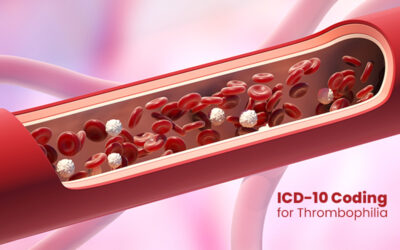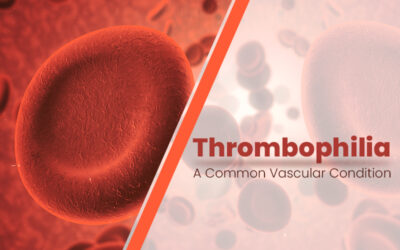The warm summer weather that everybody was waiting for has arrived. But with outdoor activity, travelling, and summer sports comes an increased number of falls, making this the time when orthopedists see many broken bones or fractures. Pediatric orthopedists treat broken bones due to extensive action in football, baseball and soccer during this time of year. The five locations where fractures typically occur in children are: distal forearm/wrist, ankle, and tibia, both bone/forearm and elbow. As they focus on treatment, physicians can rely on an experienced medical coding company to submit the right ICD-10 fracture codes for clinical billing. An expert can help physicians report traumatic fractures correctly.
A fracture refers to a break in the bone. High-force impact or stress, a minor injury, or a medical condition that weakens the bones such as osteoporosis can cause bone fractures. A fracture that occurs due to a medical condition like osteoporosis is called a pathologic fracture.
The challenges of coding fractures in ICD-10 are:
- Distinguishing between traumatic and pathologic fractures
- The need for detailed anatomic specificity
- The use of the ICD-10 seventh character to identify episode of care and type of fracture (e.g., greenstick, transverse, oblique, spiral, comminuted, segmental)
- Identifying laterality
- Using external cause codes for intent/event, place of occurrence, activity, and work status
Codes for open fractures (where bone pierces the skin) have a much higher level of specificity in ICD-10. For open fractures, further classification is needed using the Gustilo open fracture classification system, which identifies fractures as Type I, II, IIIA, IIIB, IIIC. Fractures of specified sites are coded individually by site in accordance with both the provisions within categories S02, S12, S22, S32, S42, S49, S52, S59, S62, S72, S79, S82, S89, S92, S99 and the level of detail provided in the medical record. To assign ICD-10 codes for traumatic fractures, the coder may have to choose from as many as 15 seventh-characters, based on the type or fracture, phase of healing, and whether or not a normal union has occurred during healing. Multiple fractures should be sequenced in accordance with the severity of the fracture.
To provide additional specificity, the fracture seventh characters are expanded to include:
A, Initial encounter for closed fracture
B, Initial encounter for open fracture
D, Subsequent encounter for fracture with routine healing
G, Subsequent encounter for fracture with delayed healing
K, Subsequent encounter for fracture with nonunion
P, Subsequent encounter for fracture with malunion
S, Sequela
Under ICD-10, a fracture that is not indicated as open or closed, should be coded as closed. Also, if it is not indicated whether a fracture is displaced or not displaced, it should be coded as displaced.
- Initial vs. Subsequent Encounter for Fractures
Traumatic fractures should be coded using the appropriate 7th character for initial encounter (A, B, C) for each encounter, where the patient is receiving active treatment for the fracture. Examples of active treatment include surgical treatment, emergency department encounters and evaluation and/or treatment by a new physician. For a patient who delayed seeking treatment for a fracture or nonunion, the appropriate seventh character for initial encounter should be also assigned .
Subsequent treatment of fractures should be coded using the appropriate seventh character indicating subsequent care for encounters occurring after the patient has completed active treatment of the fracture(D-R) and is receiving routine care for the fracture during the healing or recovery phase.
- D, E, F – Subsequent treatment with routine healing
- G, H, J – Subsequent treatment with delayed healing
- K, M, N – Subsequent treatment with nonunion
- P, Q, R – Subsequent treatment with malunion
Examples of fracture aftercare are: cast change or removal, removal of external or internal fixation device, medication adjustment, and follow-up visits following fracture treatment.
Care for complications of surgical treatment for fracture repairs during the healing or recovery phase should be coded with the appropriate complication codes.
Care of complications of fractures, such as malunion and nonunion, should be reported with the appropriate 7th character for subsequent care with nonunion (K, M, N,) or subsequent care with malunion (P, Q, R).
A code from category M80, and not a traumatic fracture code, should be used for any patient with known osteoporosis who suffers a fracture, even if the patient had a minor fall or trauma, if that fall or trauma would not usually break a normal, healthy bone.
- Traumatic fracture coding example
Here is an example of traumatic fracture ICD-10 coding provided by Decision Health: A 67-year-old runner sustained a stress fracture ofthe left ankle. When the cast was removed the patient began using a treadmill against his physician’s ordered activity restriction. After six weeks he had pain, and an x-ray showed mal-union of the fracture and it had to be surgically repaired. He was admitted to home health for physical therapy.Primary and Secondary Diagnoses - M1021: Stress fracture, left ankle, subsequent encounter for fracture with malunion
- M84.372P
- Additional Diagnoses
- M1025
- Rationale: The chart documentation indicated mal-union, and so the seventh character “P” is used.
- Need for proper clinical documentation
In ICD-10, the physician will need to provide the medical coding service provider with detailed information about the patient’s diagnosis. To assign the right ICD-10 codes, the clinical documentation should include the following details:- The lateral side in each and every case
- Location of the fracture: head, shaft, distal or proximal
- The type of fracture: open or closed
- Pattern of the fracture: transverse, oblique, or segmental
- If open fracture, the type of associated trauma the patient suffered
- Which specific bones were injured
- Whether the fracture was displaced
- Encounter type: initial, subsequent, sequel
- Status in the post-op period at time of subsequent encounters: routine healing, delayed healing, nonunion or malunion
Coding for fractures can be challenging. An experienced orthopedic medical billing and coding company can help you make sure that your coding is as current as possible and avoid compliance issues. Experts can ensure efficiency in claim processing to maximize reimbursement.




